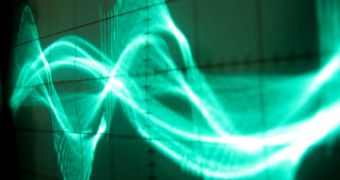The human brain has over the course of its evolution grown to such intricate complexity, that it continues to puzzle experts to this day. Most likely, it will continue doing the same for decades and centuries to come. In a recent series of studies, investigators at the Centre National de la Recherche Scientifique, in France, determined that the auditory cortex – the region of the brain that handles sound processing and recognition – is capable of making out intricate and complex noise patterns from a meaningless background noise. The researchers say that this proves the brain has great plasticity.
“The auditory brain seems to be fairly plastic over fairly short time scales,” says CNRS expert Daniel Pressnitzer. He was the lead researcher on the new investigation. For the experiments, the French team devised a random, confused noise, which they played back to test participants. Embedded in these waveforms were patterns of also-indistinct noise, but which at time repeated themselves. The group was able to determine that people are able to distinguish these noise patterns through simple, repetitive listening. The auditory cortex was 100 percent accurate in its identification process.
“It seems like a large number of listens, but you have to remember that the things we played to these people were completely unpredictable sounds. They really just sounded like: psssh. For these sounds that are quite complex and completely unpredictable, it's a bit like, if you were trying to memorize 20,000 random numbers, and you just have them 10 times replayed for you,” the team leader explained for LiveScience in an interview. For participants who had trained ears, the patterns became obvious after only two listens of the sound samples. For those with “lazy” ears, it took about 10 listens to make out the patterns. For all test subjects, the underlying noises at first resembled an “indistinct hiss.”
One of the conclusions that most surprised the science team was the fact that, weeks later, participants remembered the sounds when a follow-up test was conducted. This means that the auditory cortex is not only able to recognize random sound patterns, but that it also does so in a manner that allows for the creation of solid, long-term memories. “That's quite surprising, because there's really no way they could have rehearsed in their head whatever it is they wanted to memorize. And also, they didn't really know that we were going to call them and play them the same sounds after a little while, so it just stayed there for some reason,” Pressnitzer concludes.

 14 DAY TRIAL //
14 DAY TRIAL //